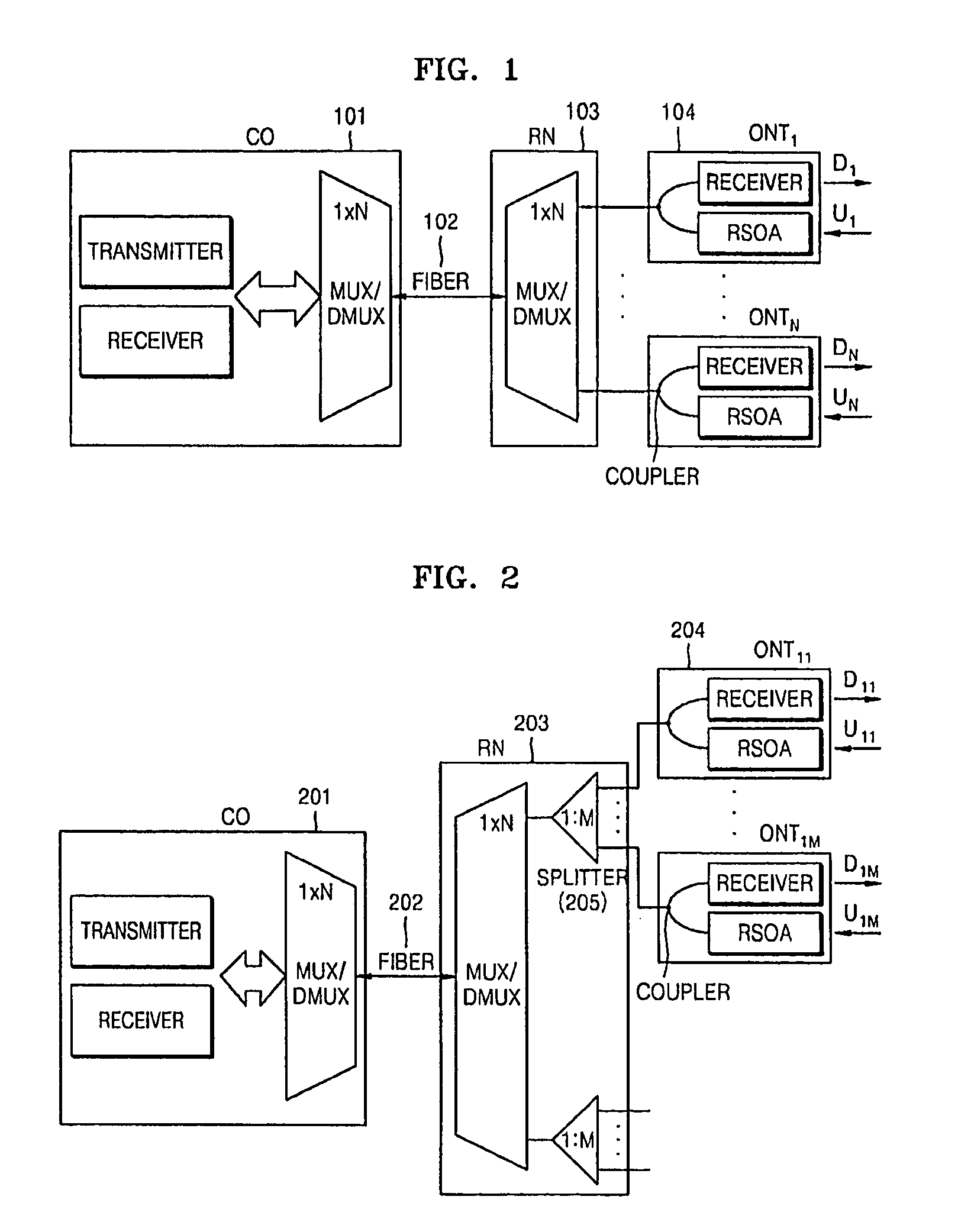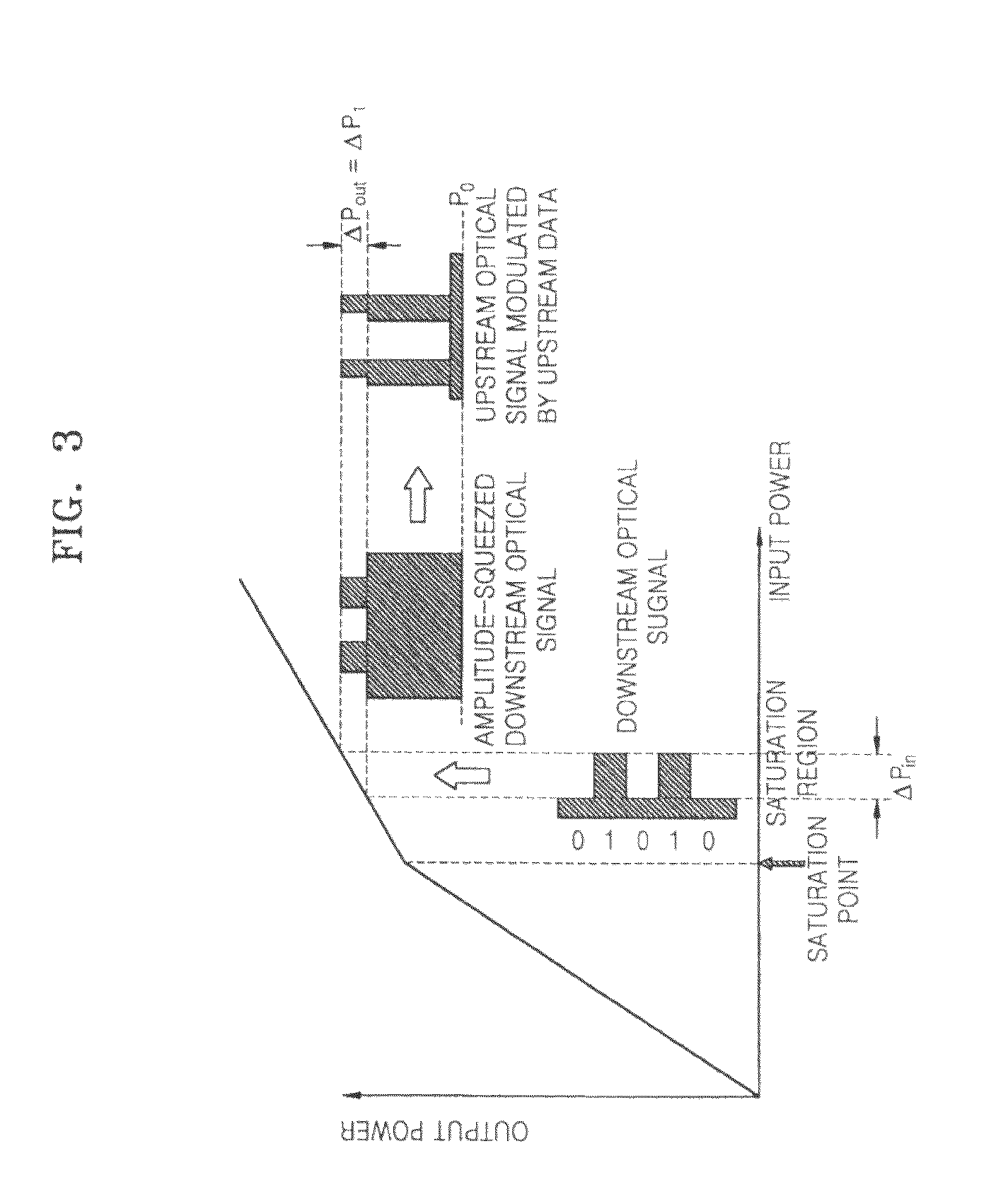Apparatus and method for OLT and ONU for wavelength agnostic wavelength-division multiplexed passive optical networks
a technology of wavelength-agnostic wavelengthdivision and optical network, applied in multiplex communication, semiconductor amplifier structure, semiconductor lasers, etc., can solve the problems of reducing the extinction ratio (er) of the input optical sufficiently, the power penalty of upstream transmission is reduced, and the transmission quality of upstream transmission is getting worse. , to achieve the effect of reducing the thickness of a level ‘1, reducing the extinction ratio of the input optical signal, and reducing the power penalty o
- Summary
- Abstract
- Description
- Claims
- Application Information
AI Technical Summary
Benefits of technology
Problems solved by technology
Method used
Image
Examples
first embodiment
[0045]FIG. 6 illustrates a driving circuit for injecting feed-forward current into an RSOA including a single active region, according to the present invention;
second embodiment
[0046]FIG. 7 illustrates a driving circuit for injecting feed-forward current into an RSOA, including a single active region, according to the present invention;
third embodiment
[0047]FIG. 8 illustrates a driving circuit for injecting feed-forward current into a RSOA including a single active region, according to the present invention;
[0048]FIG. 9 illustrates a driving circuit for injecting feed-forward current into a RSOA, including a single active region, according to a first embodiment of the present invention;
[0049]FIG. 10 illustrates a driving circuit for injecting feed-forward current into a RSOA, including two active regions, according to a second embodiment of the present invention;
[0050]FIG. 11 illustrates a driving circuit for injecting feed-forward current into a RSOA including a single active region, according to a third embodiment of the present invention;
[0051]FIG. 12 illustrates the structure of a RSOA including three active regions to improve the flatness of an input optical signal, according to an embodiment of the present invention;
[0052]FIG. 13 is a configuration diagram of a WDM-PON according to a conventional downstream optical signal r...
PUM
 Login to View More
Login to View More Abstract
Description
Claims
Application Information
 Login to View More
Login to View More - R&D
- Intellectual Property
- Life Sciences
- Materials
- Tech Scout
- Unparalleled Data Quality
- Higher Quality Content
- 60% Fewer Hallucinations
Browse by: Latest US Patents, China's latest patents, Technical Efficacy Thesaurus, Application Domain, Technology Topic, Popular Technical Reports.
© 2025 PatSnap. All rights reserved.Legal|Privacy policy|Modern Slavery Act Transparency Statement|Sitemap|About US| Contact US: help@patsnap.com



